Top 11 Misidentified People of Color
or...“White Folks” who are actually of color
by Skip Pulley
I would like to start by stating for the record, without any hesitation or self-consciousness, that there is no such thing as a “white” person. The classification of “white” is a legal distinction created by the colonial assembly of Maryland by passing the anti-miscegenation law of 1681; in order to distinguish and elevate Anglo-Saxon/Nordic-European males into an exclusive societal category and a literal class of privilege. Prior to 1681 the word “white” was never used anywhere in a legal or social context to refer to English men or women. The law was built on prior legislation from 1664 which prohibited “English or other freeborn” women from marrying negro slaves or free men of color. The law of 1681 was the literal creation of the term “white person”. Keep in mind, there was a very narrow bandwidth for inclusion in this group at this time; For example Irish, Italians, Spaniards, Greeks and most French people were not considered white. Neither were Jews (who were considered Gypsies), Russians and Poles (who were considered Tartars), Germans (who were considered Huns), and certain other European groups who were marginalized by English tradition. In addition to that, prior to the Renaissance, there were people of color all over Europe and the Americas – most of whom experiencing a relative level of equality and liberty in relation to their profession and social & cultural locale or environment. This fact will be explored in a future article on the invention of the "white person" designation.
For now, we will focus on several people of color* whom you probably thought, all your life, were Anglo-European/Nordic-Germanic/Caucasian, etc.
*Of Color does not necessarily mean Black, it means dark skinned ethnics outside Euro-Caucasian. Settle down, salt right.
Emil Ludwig, in his book “Beethoven,” says: “His face reveals no trace of the German. He was so dark that people dubbed him Spagnol [dark-skinned].” Fanny Giannatasio del Rio, in her book An Unrequited Love: An Episode in the Life of Beethoven, wrote “His somewhat flat broad nose and rather wide mouth, his small piercing eyes and swarthy [dark] complexion, pockmarked into the bargain, gave him a strong resemblance to a mulatto.” C. Czerny stated, “His beard (he had not shaved for several days) made the lower part of his already brown face still darker.” To begin the question of Beethoven's ethnicity, we must look at his parents and grandparents. Proponents of the concept point out that the composer was Flemish, and Flanders had been occupied by Spain for 200 years. Beethoven's ancestry is well-documented. His father Johann was half Flemish, half German. His mother, Maria Magdalena Keverich, was the daughter of Heinrich Keverich, chief overseer of the kitchen at the palace of the Elector of Treves at Ehrenbreitstein, in Germany. The Flemish connection only means there is a possibility of Moorish influence. Beethoven's contemporaries described him as having "thick, bristly coal-black hair," a "flat, thick nose," large mouth, and what is described as alternately "ruddy" or "swarthy" complexion. In the middle of Teutonic Germany and Austria, where the average citizen had light skin, blue eyes, and blond hair, he must have made a striking, memorable presence. But what constitutes "swarthy" among such a population might not be what modern people consider negroid. It just meant he was darker than pale-skinned Germans. A Californian with a tan for example would have been classified as "swarthy." According to the documented ancestry, Beethoven was not "out of Africa," as it were, but there are some who claim his mother's family was from the Caribbean, where black slaves and Natives worked in the oversea trades. However, there is no documented evidence toward this claim. Although there is some credence to the argument that portraits were idealized, ancestral documents were often faked, and the African and Arabic presence in Europe was suppressed by the "white-washing" of Europe during the Inquisition and Renaissance, a lack of undeniable evidence does not immediately prove the opposite.
11. & 10. The Stuarts - Mary Queen of Scots and King James
(Afro-Briton, Iberian Moor)
Irish people share a genetic origin with Iberian Moors - and Scottish people have distinct genetic and cultural ties to Egypt (the kilt, the skindo, the stone of scone, the lineage of Pharaohs Necho II and Neferhotep I, etc). Based on these facts, Irish and Scottish people are essentially of-color by default. Most early artistic depictions of King James show him with Africanesque features and dark skin color.
In 1440, Walter Bower wrote his compendium of Scottish history, Scotichronicon. According to Bower, The Scottish people were not an amalgam of Picts, Scots and other European Peoples, but were in fact Egyptians, who could trace their ancestry back to a Pharaoh's daughter and her husband, a Greek king. Her name was Scota, from which it is believed the Scots derive their name. The Greek King was Gaythelos, the basis for Gaelic, and their son was Hiber, from which comes Hibernia. According to tradition, this royal
family was expelled from Egypt during a time of uprising. They
sailed west, initially settling in Spain before traveling to Ireland
and then on to the west coast of Scotland. This same group of people
eventually triumphed over the Picts and became known as the "Scots" who ultimately united the land Scotland. The
Declaration of Arbroath, written in 1320 by
the noblemen of Scotland was a letter imploring the Pope
to intervene on their behalf during the Wars of Independence. The
text refers to "the ancients" who "journeyed from
Greater Scythia … and the Pillars of Hercules to their home in
the west where they still live today".
A new book, Scota, Egyptian Queen of
the Scots, by Ralph Ellis, claims to prove that this origin myth
was the actual recording of an Egyptian exodus that did indeed
conclude in Scotland. Having established the origins of
Scota/Ankhesenamun and Gaythelos/Aye, Ellis contends that the couple
took enough ships to bring 1,000 of their followers plus supplies out
of Egypt and across the Mediterranean. They landed first in Spain,
where they lived for several generations (their son Hiber giving his
name there to Iberia). Four generations after they first settled, the
descendants of Scota made their way to Ireland. The
originator of the Scota-Gaythelos story was an ancient text, The
History of Egypt, written in 300BC by an Egypto-Greek historian,
Manetho.
King James IV of Scotland came to the
throne in 1488. He was a visionary monarch who united and maintained order in the Scottish highlands
and lowlands. He encouraged manufacturing, shipbuilding and the creation of a navy. James IV also renewed Scotland's alliance with
France. Many Black Moors were present at his court. Some
worked as servants, but others seem to have been
invited guests or musicians.
At the beginning of the first
millennium, both Scotland and Ireland had a significant number of
black inhabitants. The presence of black people in Ireland during the
medieval era spawned the term “black Irish” (Irish people with dark hair and dark eyes thought to be decedents of the Spanish Armada of the mid-1500's) Following the Moors being driven out (and bred out) of Spain, Anglo Europeans took a special interest in Scotland
and the thriving black population there. Unlike the Moors of Southern Europe who were Muslims, the Scottish blacks were Christians
and therefore not victimized on grounds of religion. In order to
marginalize Black influence in Scotland the surrounding nations
adopted a strategy of white washing the lineage of Black Scottish
Kings. Treaties were made that would ensure intermarriages between royalty of Northern Europe and Black Scottish Nobility. King
James the 4th of Scotland married Margaret Tudor, the daughter of King
Henry the 7th of England. Their son, James the 5th,
married a French Noblewomen. Their daughter, Mary Queen of Scots, married the French Dauphin, Francis II. When he died, rather than following through with her arranged marriage to Edward,
the son of King Henry the 8th, she married her cousin,
Lord Darnley (Henry Stuart), who was straights up Black for realsies. Take a Look. ↓
Big Hank (whom the English accused of being lazy and having syphilis) fathered an heir with Mary before he was murdered by
English assassins. That heir was King James the 6th, considered to be “legally Black”; having a Black Father and
“of-color” Mother. So, like it or not, King James the 6th of Scotland (King James the 1st
of England) was a black man.
My question to my British friends is, Do you like apples?
9. Ludwig Van Beethoven
(Flemish Moor, possible Afro-Caribbean)
Let's discuss the true identity of Ludwig van Beethoven, considered Europe’s greatest classical music composer. Modern scholars attest that Beethoven was of color. Specifically, his mother was a Moor, that group of Muslim Africans who conquered parts of Europe--making Spain their capital--for some 800 years. In order to make such a substantial statement, presentation of verifiable evidence is compulsory. Let's start with what some of Beethoven's contemporaries and biographers say about his appearance. Frau Fisher, a close friend of Beethoven, described him with “blackish-brown complexion.” Frederick Hertz, German anthropologist, used these terms to describe him: “Negroid traits, dark skin, flat, thick nose.”Emil Ludwig, in his book “Beethoven,” says: “His face reveals no trace of the German. He was so dark that people dubbed him Spagnol [dark-skinned].” Fanny Giannatasio del Rio, in her book An Unrequited Love: An Episode in the Life of Beethoven, wrote “His somewhat flat broad nose and rather wide mouth, his small piercing eyes and swarthy [dark] complexion, pockmarked into the bargain, gave him a strong resemblance to a mulatto.” C. Czerny stated, “His beard (he had not shaved for several days) made the lower part of his already brown face still darker.” To begin the question of Beethoven's ethnicity, we must look at his parents and grandparents. Proponents of the concept point out that the composer was Flemish, and Flanders had been occupied by Spain for 200 years. Beethoven's ancestry is well-documented. His father Johann was half Flemish, half German. His mother, Maria Magdalena Keverich, was the daughter of Heinrich Keverich, chief overseer of the kitchen at the palace of the Elector of Treves at Ehrenbreitstein, in Germany. The Flemish connection only means there is a possibility of Moorish influence. Beethoven's contemporaries described him as having "thick, bristly coal-black hair," a "flat, thick nose," large mouth, and what is described as alternately "ruddy" or "swarthy" complexion. In the middle of Teutonic Germany and Austria, where the average citizen had light skin, blue eyes, and blond hair, he must have made a striking, memorable presence. But what constitutes "swarthy" among such a population might not be what modern people consider negroid. It just meant he was darker than pale-skinned Germans. A Californian with a tan for example would have been classified as "swarthy." According to the documented ancestry, Beethoven was not "out of Africa," as it were, but there are some who claim his mother's family was from the Caribbean, where black slaves and Natives worked in the oversea trades. However, there is no documented evidence toward this claim. Although there is some credence to the argument that portraits were idealized, ancestral documents were often faked, and the African and Arabic presence in Europe was suppressed by the "white-washing" of Europe during the Inquisition and Renaissance, a lack of undeniable evidence does not immediately prove the opposite.
8. Alexander Pushkin
(Afro-Russo, Afro-Abkhazians)
Considered the father of Russia's Golden Age of literature, Alexander Pushkin, was born into nobility in the summer of 1799. He was the great-grandson of an Ethiopian prince named Ibrahim Gannibal, who had relocated to Russia and become a general in the army of Peter the Great.
Pushkin became a member of a revolutionary group dedicated to social reform and wrote poems that reflected his views. His work, which included "Freedom" and "The Village," came under scrutiny by Russian authorities and led to his exile in 1820 to his mother's estate.
Six years later, he was pardoned by Czar Nicholas I and free to travel; he married in 1831 and later challenged one of his wife's admirers to a duel in 1837. He died two days later from injuries he sustained in the battle. Pushkin's most famous works include the poem The Bronze Horseman, the verse novel Eugene Onegin and the play Boris Gudunov. He also left behind an unfinished novel about his Ethiopian great-grandfather. It isn’t until exploring Pushkin’s unpublished works that readers might suspect that Pushkin was indeed black. In fact, the author may have had some anxiety about revealing his ethnicity to the public at large. The unfinished novel about his great-grandfather and African ancestry, titled The Blackamoor of Peter the Great, was published soon after Alexander's death. That withstanding, he is considered to be the greatest Russian poet. He pioneered the use of vernacular speech in his poems and plays, mixing both drama and romance. Alexander Pushkin introduced Russia to all the European literary genres. He brought natural speech and foreign influences. Even though he lived a short life, he left examples of nearly every literary genre of his day; lyric poetry, narrative poetry, the novel, the short story, the drama, the critical essay, and even the personal letter. He lived a life entirely based on his favorite quote: “Live by the pen, die by the sword.” In the end, although he lived life like a playboy, he went out like a soldier. Respect.
Pushkin became a member of a revolutionary group dedicated to social reform and wrote poems that reflected his views. His work, which included "Freedom" and "The Village," came under scrutiny by Russian authorities and led to his exile in 1820 to his mother's estate.
Six years later, he was pardoned by Czar Nicholas I and free to travel; he married in 1831 and later challenged one of his wife's admirers to a duel in 1837. He died two days later from injuries he sustained in the battle. Pushkin's most famous works include the poem The Bronze Horseman, the verse novel Eugene Onegin and the play Boris Gudunov. He also left behind an unfinished novel about his Ethiopian great-grandfather. It isn’t until exploring Pushkin’s unpublished works that readers might suspect that Pushkin was indeed black. In fact, the author may have had some anxiety about revealing his ethnicity to the public at large. The unfinished novel about his great-grandfather and African ancestry, titled The Blackamoor of Peter the Great, was published soon after Alexander's death. That withstanding, he is considered to be the greatest Russian poet. He pioneered the use of vernacular speech in his poems and plays, mixing both drama and romance. Alexander Pushkin introduced Russia to all the European literary genres. He brought natural speech and foreign influences. Even though he lived a short life, he left examples of nearly every literary genre of his day; lyric poetry, narrative poetry, the novel, the short story, the drama, the critical essay, and even the personal letter. He lived a life entirely based on his favorite quote: “Live by the pen, die by the sword.” In the end, although he lived life like a playboy, he went out like a soldier. Respect.
7. Saint Augustine
(Berber, Afro-Arab)Saint Augustine was born in Thagaste, Numidia, a trading town in North Africa. So, at the very least, he was unarguably African. He was born just South of Hippo Regius, a Roman city in modern Algeria in AD 354. While his father was a Roman colonist, his mother Monica was Berber, an ethnic group indigenous to North Africa. Augustine’s mother's name is thought by anthropologists to have been a derivative from the ancient Berber god, Mon. Even though he built many of his arguments on the rationalism of Plato, Augustine’s thoughts are so original that he has become institutionalized. It is not uncommon to hear the adjective “Augustinian” in a philosophy class. Africans and people of African origin who heard his name in a philosophical context could be forgiven for not knowing they had some affinity with him.
For many African academic philosophers, the task has always been two-fold. The first part is to learn as much as you can about what you’re told Europeans picked up from the ancient Greeks and the Romans.
The second part is dicier. You are then to use the tools bequeathed by the Europeans and their intellectual forebears to mold your narrative of self, community and world.
It is no wonder that one of the most contentious subjects you may discuss in the philosophy department of an African university is “What is African philosophy?” Within that question contains other more headaches such as, “Who is African?” and “What is African?”
The various responses to these questions tend to border on the geographical origins, ethnic heritage and the subjects treated by those we may call philosophers.
Admittedly, there are no hard and fast rules on the boxes to tick before one may be called an African philosopher. For instance, Frantz Fanon was not born in Africa but to a lot of academics, his dispositions on subjects such as white supremacy and colonialism, tend to make him an “African” philosopher. Albert Camus was born in Algeria yet it is not difficult to find materials in which he is described as a “French” philosopher. Augustine probably never thought of himself as an African. He was a Roman citizen, who was literate in Latin and knowledgeable in Roman ways. Augustine lived at least, one thousand years before Caucasians decided one’s ethnicity was a disqualification. Augustine’s time was before the fraudulent subject of scientific racism. Augustine lived before Henri de Boulainvilliers, Carl Linnaeus, Christoph Meiners and thousands of Caucasians who reasoned in amazingly backward ways trying to prove the inferiority of non-Caucasian people.
When eleven Southern states seceded from the Union beginning on December 20, 1860, sparking the Civil War, Jefferson Davis resigned as a U.S. Senator from Mississippi. He was appointed Confederate president in 1861. Varina officially became the “First Lady of Confederacy.”
Howell did not have a smooth time as the Confederacy’s first lady because some wealthy white Richmond residents considered her olive complexion unattractive. Some openly referred to her as mulatto or an Indian “squaw,” according to the Encyclopedia of Virginia.
Howell was born in 1826 on the Briers, a family plantation near Natchez, Mississippi. She met Davis when she was 17 while visiting "the Hurricane", a plantation owned by Joseph Emory Davis, Jefferson Davis’s older brother. Her father, Colonel Joseph Kemp, was a Scots-Irish immigrant from Northern Ireland and her mother, Margaret Graham, was born in Prince William County. Although the family claims they are 100% European, Varina’s photographs tell a different story.
In April 1865, Jefferson Davis fled Richmond to escape from the advancing Union Army. He was captured on May 22, 1865, and sentenced to prison. He remained in prison until May 13, 1867, when Horace Greeley (an abolitionist) contributed to posting his bail.After Jefferson's death, Varina Davis and her daughter Varina Anne Davis moved to New York City from Mississippi. (Her Father was originally from New Jersey). Varina Davis supported herself writing for Joseph Pulitzer’s newspaper, New York World. She also wrote the book Jefferson Davis, A Memoir.
In the latter part of her life, she became a strong supporter of Booker T Washington. She died on October 16, 1906, of pneumonia, in her apartment, which overlooked Central Park.
The second part is dicier. You are then to use the tools bequeathed by the Europeans and their intellectual forebears to mold your narrative of self, community and world.
It is no wonder that one of the most contentious subjects you may discuss in the philosophy department of an African university is “What is African philosophy?” Within that question contains other more headaches such as, “Who is African?” and “What is African?”
The various responses to these questions tend to border on the geographical origins, ethnic heritage and the subjects treated by those we may call philosophers.
Admittedly, there are no hard and fast rules on the boxes to tick before one may be called an African philosopher. For instance, Frantz Fanon was not born in Africa but to a lot of academics, his dispositions on subjects such as white supremacy and colonialism, tend to make him an “African” philosopher. Albert Camus was born in Algeria yet it is not difficult to find materials in which he is described as a “French” philosopher. Augustine probably never thought of himself as an African. He was a Roman citizen, who was literate in Latin and knowledgeable in Roman ways. Augustine lived at least, one thousand years before Caucasians decided one’s ethnicity was a disqualification. Augustine’s time was before the fraudulent subject of scientific racism. Augustine lived before Henri de Boulainvilliers, Carl Linnaeus, Christoph Meiners and thousands of Caucasians who reasoned in amazingly backward ways trying to prove the inferiority of non-Caucasian people.
6. Varina Davis
(Creole, Melungo, Native American)
Jefferson Davis, president of Confederate States of America, was married during the Civil War to Varina Howell Davis, considered by most at that time a "mulatto" of Creole Origin. Varina Howell was Davis’s second wife and the couple met in 1843. They quickly fell in love and married. Davis was 35 and a wealthy plantation owner. Howell was 17.When eleven Southern states seceded from the Union beginning on December 20, 1860, sparking the Civil War, Jefferson Davis resigned as a U.S. Senator from Mississippi. He was appointed Confederate president in 1861. Varina officially became the “First Lady of Confederacy.”
Howell did not have a smooth time as the Confederacy’s first lady because some wealthy white Richmond residents considered her olive complexion unattractive. Some openly referred to her as mulatto or an Indian “squaw,” according to the Encyclopedia of Virginia.
Howell was born in 1826 on the Briers, a family plantation near Natchez, Mississippi. She met Davis when she was 17 while visiting "the Hurricane", a plantation owned by Joseph Emory Davis, Jefferson Davis’s older brother. Her father, Colonel Joseph Kemp, was a Scots-Irish immigrant from Northern Ireland and her mother, Margaret Graham, was born in Prince William County. Although the family claims they are 100% European, Varina’s photographs tell a different story.
In April 1865, Jefferson Davis fled Richmond to escape from the advancing Union Army. He was captured on May 22, 1865, and sentenced to prison. He remained in prison until May 13, 1867, when Horace Greeley (an abolitionist) contributed to posting his bail.After Jefferson's death, Varina Davis and her daughter Varina Anne Davis moved to New York City from Mississippi. (Her Father was originally from New Jersey). Varina Davis supported herself writing for Joseph Pulitzer’s newspaper, New York World. She also wrote the book Jefferson Davis, A Memoir.
In the latter part of her life, she became a strong supporter of Booker T Washington. She died on October 16, 1906, of pneumonia, in her apartment, which overlooked Central Park.
5. Elvis Presley
(Cherokee, Creole, Melungo)
Let's take a look at Elvis’ ethnicity on his mother’s side. Elvis had some Native American ancestry, specifically Cherokee. According to the book Elvis and Gladys, his maternal great-great-great grandmother was a Cherokee woman named Morning White Dove. Morning White Dove married a man named William Mansell, who was of French ancestry. They got married at a time when marriage between Native Americans and white people was not uncommon in the American South. Some fans might be surprised to learn that Elvis had Native American heritage. However, one of his movies reflects this heritage. Elvis starred in a Western musical/drama called Flaming Star in 1960. In the film, he played a man with a Native American mother and a white father. While many Westerns portray Native Americans in a negative light, Flaming Star is sympathetic in its portrayal. The film was released during the civil rights movement and arguably mirrors changing attitudes about race in America. Elvis' father, Vernon, was primarily of Scottish origin (back to the Iberian Moor theory) whose ancestors settled in North Carolina in the 18th Century. Born April 10, 1916 in Fulton, Mississippi, Vernon’s parents were Jessie D. McClowell Presley and Minnie Mae Hood Presley.Elvis' mother Gladys had black hair and dark eyes. As a youth she liked to play basketball. She also loved music and dancing. Vernon was tall and fair haired. He too liked music and had a good singing voice. He also enjoyed working on cars. In Tupelo, Mississippi they met and fell in love. They eloped on June 17, 1933 and married in Ponotoc County. Their son Elvis, and his stillborn twin Jessie, were born January 8, 1935 at home in Tupelo MS. Elvis Scottish ancestry was traced to Andrew Presley who married Elsbeth Leg August 27th 1713 at the Lonmay Church in Aberdeenshire. It was Andrew’s son, also called Andrew, who was forced to flee Scotland in 1745 at the time of the Jacobite Rebellion and went to the Americas to settle in the Carolinas. Public records prior to 1700 are very had to find so it was not possible to trace the Presleys back further.
Researcher Brent Kennedy, a college administrator in Wise, VA theorizes that Elvis, along with Abraham Lincoln and Ava Gardner, may trace their ancestors to the mysterious Melungeons. These dark-skinned, blue-eyed people were first documented in Virginia’s Blue Ridge in the late 1700s. Over the years, various myths about their origin arose. Some believed they were either survivors from the Lost Colony of Roanoke or Portuguese shipwrecks. Others suggested they were descendants of one of the lost tribes of Israel or of early Carthaginian or Phoenician seamen. What is universally agreed is that the dark-skinned Melungeons were discriminated against by their Anglo-Saxon neighbors. Because they were thought to have intermarried with blacks, they were declared “free persons of color.” Melungeons were denied such rights, as the right to vote; own their own land; educate or send their children to school; defend themselves in court; or intermarry with anyone other than a Melungeon. The term itself became an insult. As the Scotch-Irish immigrants moved down the Shenandoah Valley, they pushed the Melungeons farther and farther into the remote hills and valleys of the Appalachians. Not only is Melungeon racial heritage clouded in mystery, but even the term has obscure roots. In the 17th century, the French encountered Mediterranean-skinned people with straight black hair, fine European features and high cheekbones in the North Carolina hills. Thus, some scholars argue that “Melungeon” is a variation of the French “mélange” for “mixture” or “mixed-blood.” Others believe the term derives from the Portuguese “melungo” or “shipmate” which also has Turkish or Arabic roots meaning “cursed soul.”
Although George Herman "Babe" Ruth denied it when asked, especially early on, rumors and suppositions persisted about his racial background. His nose was just broad enough, his lips were just full enough and his complexion was just swarthy enough to draw not only suspicions but also some vile, N-word taunts from the opposing team's bench. There exists an account by sportswriter Fred Lieb, of a confrontation with Ty Cobb, the most racist piece of sh*t in the history of baseball. The two stars were scheduled to share a cabin on a Georgia hunting trip, but Cobb refused. When asked why, he said, “I’ve never bedded down with a n*gger and I’m not going to start now”. According to commentator Roland Rogers at blackathlete.com, there were several accounts of Ruth being a frequent visitor of black women and supporter of black entertainers in Harlem during the 1920s. Although Ruth's maternal grandparents were immigrants from Germany, his father's family lived for several generations in 19th Century Baltimore and is less easy to trace with total racial certainty. Ruth, the most renowned baseball player of the 20th century, the embodiment of a time when only white athletes played pro sports, may have been black. It wasn’t just his “broad lips and wide nose” hinting at mixed heritage. Or that he dated black women and spent evenings at the Cotton Club in Harlem. It was that many of his contemporaries believed he was black. During the 1922 World Series at the Polo Grounds, a Giants player named Johnny Rawlings shouted racial slurs at Ruth. After the game, Ruth burst into the Giants locker room and challenged Rawlings to a fight. Only when Ruth noticed the baseball writers standing nearby did he calm himself. According to biographer Robert Creamer, Ruth begged the journalists not to write anything about the incident. He told Rawlings, “I don’t mind being called a prick and a c*cksucker, but none of that personal stuff.”
Ruth was born in Baltimore in 1895. His father owned a saloon and his mother was an alcoholic. After his mother had an affair with one of his father’s bartenders, his parents divorced. At age seven, Ruth was sent to the St. Mary’s Industrial School for Boys, where he was taunted with the nickname “n*gger lips.” There were always rumors that Ruth had African-American ancestry. His parents were less than faithful and it’s possible Ruth was illegitimate. In any case, Ruth passed for white and enjoyed all the benefits of a white man in American society. It wasn’t uncommon for African-American celebrities of the era to pass for white. Not only did he have darker skin and stereotypical Black features, Ruth fostered close relationships within New York City’s Black community. He regularly barnstormed with Negro League teams, befriended famed entertainer Mr. Bojangles, and gifted Harlem crime boss Bumpy Johnson a pocket-watch. According to Ruth’s daughter, league officials prevented Ruth from becoming a manager out of fear that he would break the so-called “gentlemen’s agreement” upholding the de facto ban of Black players in the major leagues.4. Babe Ruth
(Afro-Caribbean, Melungo)Although George Herman "Babe" Ruth denied it when asked, especially early on, rumors and suppositions persisted about his racial background. His nose was just broad enough, his lips were just full enough and his complexion was just swarthy enough to draw not only suspicions but also some vile, N-word taunts from the opposing team's bench. There exists an account by sportswriter Fred Lieb, of a confrontation with Ty Cobb, the most racist piece of sh*t in the history of baseball. The two stars were scheduled to share a cabin on a Georgia hunting trip, but Cobb refused. When asked why, he said, “I’ve never bedded down with a n*gger and I’m not going to start now”. According to commentator Roland Rogers at blackathlete.com, there were several accounts of Ruth being a frequent visitor of black women and supporter of black entertainers in Harlem during the 1920s. Although Ruth's maternal grandparents were immigrants from Germany, his father's family lived for several generations in 19th Century Baltimore and is less easy to trace with total racial certainty. Ruth, the most renowned baseball player of the 20th century, the embodiment of a time when only white athletes played pro sports, may have been black. It wasn’t just his “broad lips and wide nose” hinting at mixed heritage. Or that he dated black women and spent evenings at the Cotton Club in Harlem. It was that many of his contemporaries believed he was black. During the 1922 World Series at the Polo Grounds, a Giants player named Johnny Rawlings shouted racial slurs at Ruth. After the game, Ruth burst into the Giants locker room and challenged Rawlings to a fight. Only when Ruth noticed the baseball writers standing nearby did he calm himself. According to biographer Robert Creamer, Ruth begged the journalists not to write anything about the incident. He told Rawlings, “I don’t mind being called a prick and a c*cksucker, but none of that personal stuff.”
3. Karl Marx
(Sephardic Jew, Iberian Moor, Mizrahi Jew)
All of the writers and researchers who label Marx as a racist and anti-Semite also happen to accept and gravitate toward a completely Eurocentric and noticeably right wing nationalist view of political and economic systems. So, for now lets set all that aside in favor of a frank discussion regarding his background. In his first year as a student at the University of Bonn, according to Jonathan Sperber’s recent biography, Marx’s classmates dubbed him “the Moor,” because of “his swarthy complexion,” (dark skin). Another biographer, Franz Mehring, says that the nickname was “given to him on account of his jet-black hair and dark complexion.” The label stuck with him until his death almost five decades later. He was judged by his contemporaries to have physical features associated with the Maghreb region of North Africa. The nickname also served to highlight Marx’s Jewish heritage, hinting that he wasn’t fully recognized as German. In spite of his father’s conversion at the age of 35 to Lutheran Christianity (and his corresponding name change from Heschel to Heinrich) which was necessary because post-Napoleonic Prussian legal reform made it illegal for Jews to practice law, Marx was regarded by his peers as a Jew. Most of the Jews in Europe during the 19th century were not considered to be Caucasian. So, if Marx wasn’t considered to be "white", it’s because other European Jews of the late 19th and early 20th centuries, such as Rosa Luxemburg or Leon Trotsky were also not white. It is for this reason that Marx’s nickname, the Moor, is significant; as a hint that Marx, in spite of his atheism and his parents’ conversion to Christianity, he was nevertheless regarded by his peers as a foreigner, whose roots were in the Middle East, not Germany. Karen Brodkin writes, "Marx was regarded as a Jew, not a "white" person, or a German or even a proper European. Shouldn’t the critical distance we take from the racist view of Jews lead us to ignore racial categories by racist Europeans in the 19th century?" Racial categories are a socio-political invention. Racial positions are instituted socially. This view is consistent with the view of American Jews in the book, How Jews Became White Folks, and What That Says About Race in America, by Karen Brodkin.
2. Jackie O (Jacqueline Bouvier) Jackie Kennedy
(Afro-American, Creole, North African Moor)
I had a super big crush on Jackie Kennedy when I was a kid. She just had that certain something. And when all was said and done, she knew the score. She was hip to what they did to Jack in Dallas, and her goal was to protect her children. I really admire that. She was a beautiful lady. In addition to being a fine-as-Gallo's-wine sista' girl as well. Jackie’s ancestor, John van Salee De Grasse, was a black American, who was also the first black American formally educated as a doctor. After van Salee De Grasse became a doctor he joined the Medical Society of Massachusetts and served as surgeon for the 54th Massachusetts Volunteer Infantry Regiment during the Civil War. Jackie's father, John Vernau “Black Jack” Bouvier, got that nickname because of his dark complexion, but he also knew the score. When Jackie first started private school, the administrators contacted Black Jack to make sure she was "really white". When society photographer Cecil Beaton met her at a dinner party in 1961 he commented in his journal that she had a ‘Negroid’ appearance. President Kennedy supported (although somewhat tepidly) anti-discrimination laws, so the New York Genealogical and Historical Society approached Jackie Kennedy hoping to discuss her African ancestry. Perhaps, they thought, it could help get a Civil Rights bill passed. When Jackie Kennedy was asked by the press about her van Salee roots during the height of the Civil Rights Movement, she called her ancestors “Jewish”, which wasn't exactly a lie, as they were Moroccan Moors and could have very well also been Sephardic or Mizrahi Jews, whom of course are of color. The van Salee’s, who were described as “mulatto” in the 17th century, were among New York's first settlers. Anthony van Salee, following a dispute with his white wife, was exiled to territory across the river, where he became Brooklyn’s first settler. Until a few decades ago, this property adjoining Coney Island was called Turk’s Island after Anthony van Salle (the term “Turk,” in his day was synonymous with Moor or North African). This link of Jackie Kennedy to an Afro-Dutch lineage also comes from modern researcher Mario de Valdes y Cocom, who has found links between the Van Salees and the Vanderbilts, among other famous American families. Other notable 20th century figures who have Van Salee ancestry include actor Humphrey Bogart and John Hammond of Columbia Records, the latter of which was descended from a Vanderbilt.
Honorable Mentions:
Thomas-Alexandre Dumas and his Son, Alexandre Dumas
(Afro-Caribbean, North African Moor)
One of the greatest Generals of all time begat one of the greatest writers of all time. That's what I call good parenting.
Thomas was his son's inspiration for
the Count of Monte Cristo
Carol Channing
(Afro-American, Creole)
But hey, you gotta do what you gotta do, I suppose. I guess we know now why she always wore a wig.
She was cute, though. I would have checked up on that myself.
Ava Gardner
(Melungeon, Native American)
Ava is a bit of a mystery. There are credible sources that verify she was Elvis' cousin. Many petty-bourgeois Eurocentric apologists are adamant that her ancestry was exclusively English, but that is mostly an indignant reaction to her un-publicized activism on behalf of American minority groups of-color. She was a proud member of the NAACP.
Ava was an extraordinary human being.
1. Charlotte Mecklenburg (Queen Charlotte, Wife of George III)
(Iberian Moor, Turkish Moor, East African)
Queen Charlotte (1744-1818), wife of King George III, was recently depicted in the popular Netflix series ‘Bridgerton’, in which she was played by Guyanese-British actor Golda Rosheuvel. Many of Queen Charlotte’s paintings show her African features in the most pronounced manner, which other painters might have obliterated, as Royal portrait makers were concerned more with aesthetic appeal than accuracy. Born “Sophia Charlotte of Mecklenburg-Strelitz on 19 May 1744, she was the youngest daughter of Duke Charles Louis Frederick of Mecklenburg-Strelitz and Princess Elizabeth Albertina of Saxe-Hildburghausen, a small northern German duchy in the Holy Roman Empire. In the 18th century, a painting of Queen Charlotte, wife of the British King George III, sparked a flurry of debate because her facial features seemed more in keeping with someone of African heritage. And with good reason: It seems that Queen Charlotte was descended from a branch of a Portuguese royal family who traced their ancestry to a 13th-century ruler named Alfonso III and his lover Madragana, who was "a Moor"( an old term for someone of African or Arabic descent). The theory seems to have been first propounded by Jamaican-American author Joel Augustus Rogers in 1940, who claimed Queen Charlotte had the “broad nostrils and heavy lips of the Negroid type”. Horace Walpole, English nobleman and writer, is also said to have described Charlotte as “The nostrils spreading too wide; the mouth has the same fault.” There are also accounts claiming that the Royals’ personal physician, Baron Christian Friedrich von Stockmar, described her as having “a true mulatto face”. Historian Mario De Valdes y Cocom traces a long maze of genealogical roots to claim that “Queen Charlotte, wife of the English King George III, was directly descended from Margarita de Castro y Sousa, a Black branch of the Portuguese Royal House. Six different lines can be traced from English Queen Charlotte back to Margarita de Castro y Sousa, in a gene pool which because of royal inbreeding was already minuscule, thus explaining the Queen’s unmistakable African appearance.” Margarita de Castro e Souza, whom Cocom says Queen Charlotte was descended from, was a 15th-century noblewoman. Her African ancestry is established by linking her to Madragana, an African lover of ruler Alfonso III of 13-century Portugal.
There were several more who didn't make the list, either because the evidence was sketch or I just didn't like them as a human being. (I'm looking in J. Edgar Hoover's Direction)
A note to reactionaries on all sides; All of this info is based on research and common sense. People who think lineage and genealogy is 100% definitive are the same people who think representative democracy still works. For well over half the people alive on earth right now, your Pops is your only your Pops because your Moms told you that. So-called "pure-blood" nonsense is rapidly being exposed for the eugenicist supremacist rhetoric that it is.
Skip Pulley
Editor in Chief

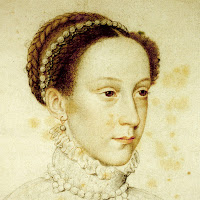
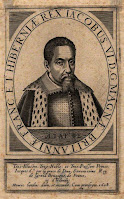


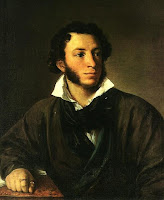

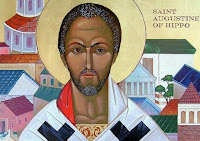

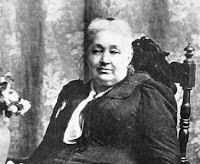

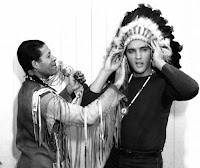
















Comments
Post a Comment